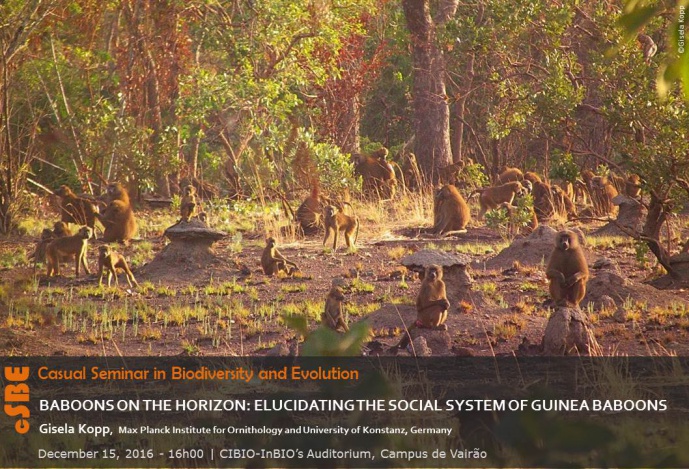BABOONS ON THE HORIZON: ELUCIDATING THE SOCIAL SYSTEM OF GUINEA BABOONS

CASUAL SEMINAR IN BIODIVERSITY AND EVOLUTION

Primates exhibit a particularly high diversity in social systems, and thus play a central role in understanding social evolution, including the biological origin of human societies. Although baboons are one of the best studied primate species, until recently little was known about the westernmost member of the genus, the Guinea baboon (Papio papio). In this talk I give an overview about the findings from the first years of research at the field site CRP Simenti in the Niokolo Koba National Park in Senegal, run by the German Primate Center. Guinea baboons display a multi-level social organization, with basal reproductive units comprising one ‘primary’ male, one to several females, young, and occasionally ‘secondary’ males. Three to five units form ‘parties’, which team up with other parties to form a ‘gang’. Different gangs have largely overlapping home ranges and agonistic interactions between different parties or gangs are rare. Some but not all males with strong social relationships are related, and population genetic and behavioural evidence indicate female-biased dispersal. Females play an important role in intersexual bond formation and maintenance, and female tenure length varies between a few weeks to several years. While the social organization resembles that of hamadryas baboons (P. hamadryas), the social structure differs considerably, specifically in terms of low male aggressiveness and female freedom. Despite substantial differences in social organization and social structure, the acoustic structure of Guinea baboon vocalizations does not differ substantially from that of other baboon taxa. With its multi-level organization, female-biased dispersal, stable bonds between males and females, as well as a high-degree of male-male cooperation and tolerance, Guinea baboons constitute an intriguing model for reconstructing human social evolution.
Gisela Kopp completed her PhD on the influence of different social systems on gene flow in baboons in 2015 at the German Primate Center and the University in Göttingen. She was involved in the establishment of the first long-term field study on Guinea baboons in Senegal and collaborated with CIBIO-InBIO’s scientists Maria Joana Ferreira da Silva and José Carlos Brito on a distribution wide population genetic study of this species. She is now a Postdoc at the Max Planck Institute for Ornithology in Radolfzell and the University of Konstanz, working on the evolutionary causes and consequences of animal social system variation, with a focus on primates and bats.
[Host: Maria Joana Silva, Biodiversity of Deserts and Arid Regions]
Image credits: Gisela Kopp